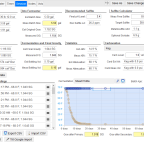 This week I cover some of the basic concepts of using fruit in BeerSmith for making beer, wine, cider or meads. Fruit Basics BeerSmith 3 supports the use of fruit juice, purees, honey and whole fruits natively when making beer, mead, wine and cider recipes. Typically most fruits are added during primary or secondary fermentation. […]
This week I cover some of the basic concepts of using fruit in BeerSmith for making beer, wine, cider or meads. Fruit Basics BeerSmith 3 supports the use of fruit juice, purees, honey and whole fruits natively when making beer, mead, wine and cider recipes. Typically most fruits are added during primary or secondary fermentation. […]  This week I cover some of the basic concepts of using fruit in BeerSmith for making beer, wine, cider or meads. Fruit Basics BeerSmith 3 supports the use of fruit juice, purees, honey and whole fruits natively when making beer, mead, wine and cider recipes. Typically most fruits are added during primary or secondary fermentation. […]
This week I cover some of the basic concepts of using fruit in BeerSmith for making beer, wine, cider or meads. Fruit Basics BeerSmith 3 supports the use of fruit juice, purees, honey and whole fruits natively when making beer, mead, wine and cider recipes. Typically most fruits are added during primary or secondary fermentation. […] 





